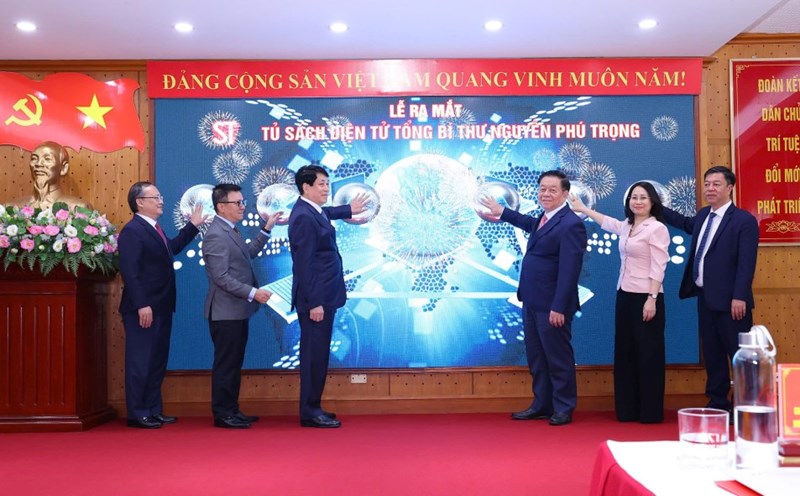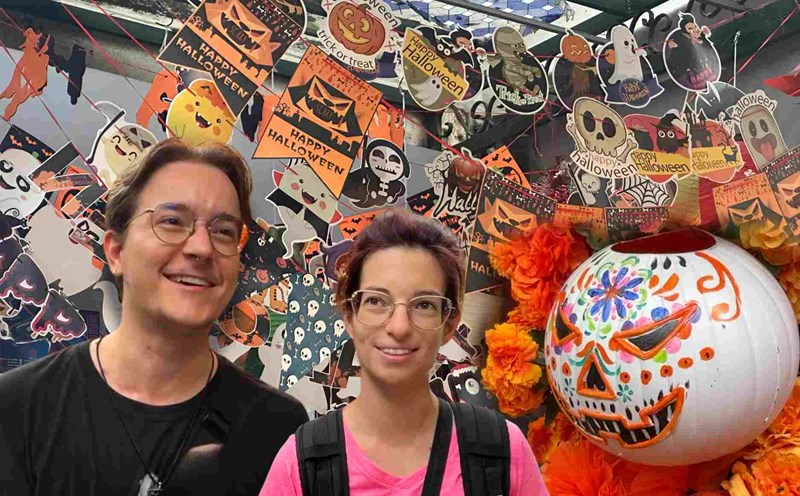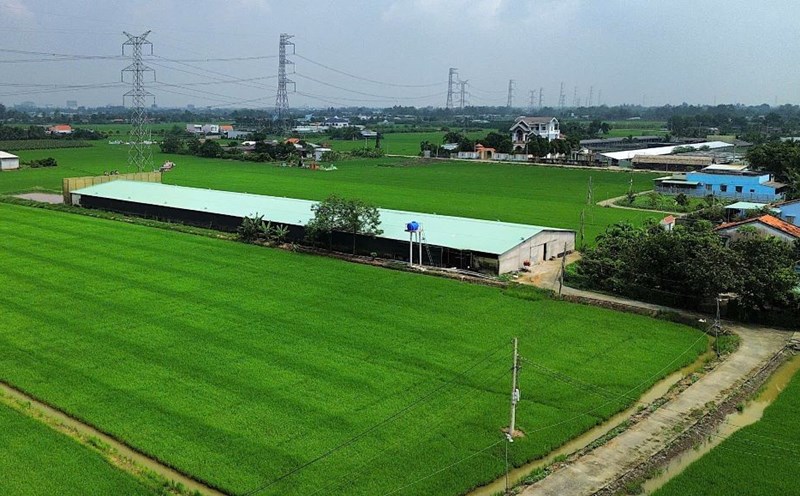1.
It can be said that "Duyen" is a visual feast of paintings, statues, and ceramics that artist Le Thiet Cuong brought to Saigon for the first time in the sense of a personal exhibition. "Duyen" arranges, arranges, decorates shapes - colors - materials in a graceful and meticulous manner. Viewers still recognize Le Thiet Cuong in each branch, as well as in the entire art tree he planted.
His paintings are economical in shape, color, and have lots of empty space, and have been "identified" by his minimalist drawing style. Whether the material is oil paint, gouache painted on screen cloth backed with do paper or lacquer, this consistency remains the same - Le Thiet Cuong calls it "I arrived at the minimalist station". From his first solo exhibition titled "Children's Rhyme" (1991), the artist has now presented 29 personal exhibitions (including "Duyen") at home and abroad. Starting with gouache, until "Duyen" has gathered all the materials, it can be considered an initial summary.
Le Thiet Cuong's paintings are not realistic, but only suggestive and suggestive. An old roof, an old ceramic vase, an old table, a blackboard, an upside-down portrait... are always both enough and lacking. The drawing is [enough], but the viewer sees where the painted person's mind is still, wistful, thoughtful, and sad. Although the graphics in the painting are clear, the lines and patches are not blurry and fanciful, and the artist does not emphasize the shades of color, the poetry and love are more suggestive than the rational.
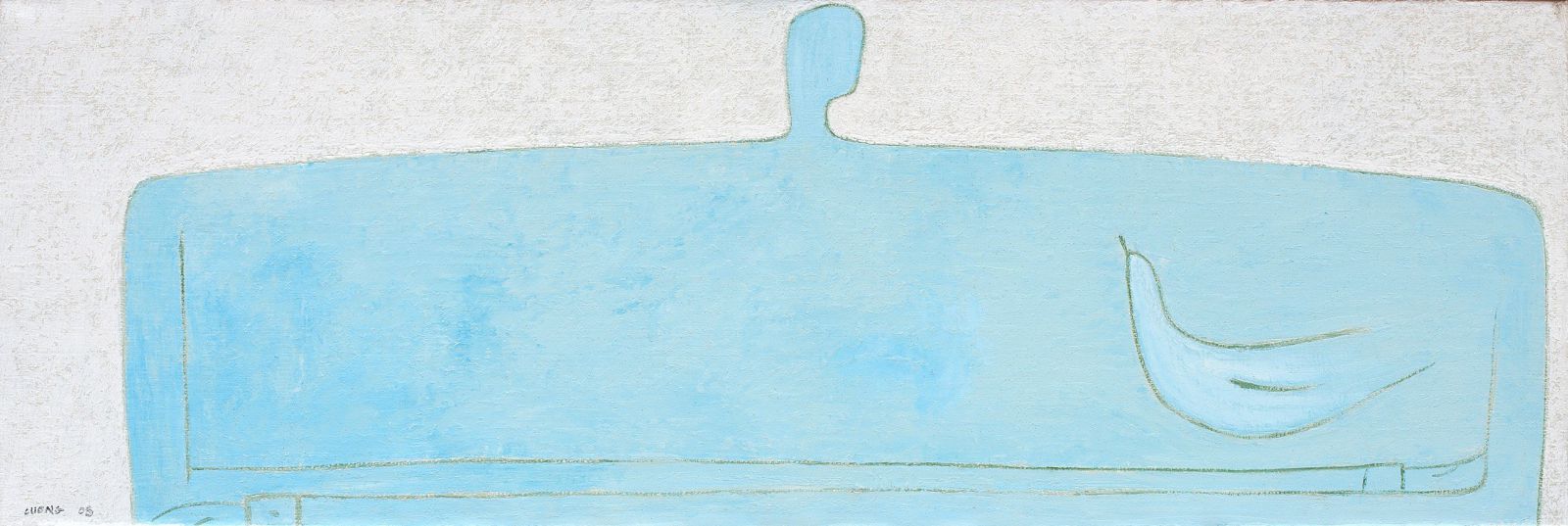
The highlight of Le Thiet Cuong's statues is that he liked to use cut lines and cross-sections; Materials range from sustainable (iron, stone) to less sustainable (mirror, glass). A perfectly shaped chair, a grain of rice split in half, a vertical bust portrait, a thin-edged Buddha statue... always make us imagine "leftover cuts". At the same time the object is "taken away" from the mass of material that makes it up, on the one hand it is "intentionally" added to the missing part by the space and the viewing eye. Viewers ask: Why did the artist cut and saw them? The artist replied: "A flat surface is also a solid." And "Those dimensions have expanded the block, added space to the block, made the block clearer, giving the block another Face, another Face".
When "playing" with ceramics, the artist pieces together pieces to create ceramic mosaics (mosaic) or simply paints verses and Buddhist scriptures on pots, plates, and jars. People may say that ceramic paintings have no function other than to be viewed, but ceramic vases, vases, and ceramic plates can be viewed while also being able to arrange flowers and place them to serve fruit. The space is beautified, and even the flowers and ceramic vases are also more beautiful. Names like Bat Trang, Huong Canh, Phu Lang... also become more beautiful. Beauty doesn't need to go far to have it or travel far to see it. It's always in my eyes, it's just a matter of whether my mind is devoted to it and whether I recognize it." More than anyone else, artists are the ones who always remind us of that.
2.
Like many essays written by Le Thiet Cuong, his visual art is poetic. Talking about poetry, as poet Nguyen Quang Thieu explains, it "contains a romantic spirit and immense freedom". Life always has two sides: messy reality and magical beauty. The person who sees more beauty has more happiness. "You have to try to live, but who can try to do art and love?". The rhetorical question is his statement.
An artist can choose this type of canvas to paint but not that type of canvas, use this type of brush but not another, paint on this ceramic vase shape but not another ceramic vase shape... carefully and in detail. . Even the minimalist art path he pursued faithfully and to the extreme, in the end, did not lose its own poetry. Interpretations of shape, color, layout, space, material, mass, style... are ways to understand more about the work, but without interpretation, from the beginning, each person can feel the features of the work. gentle and delicate when standing in front of his work.
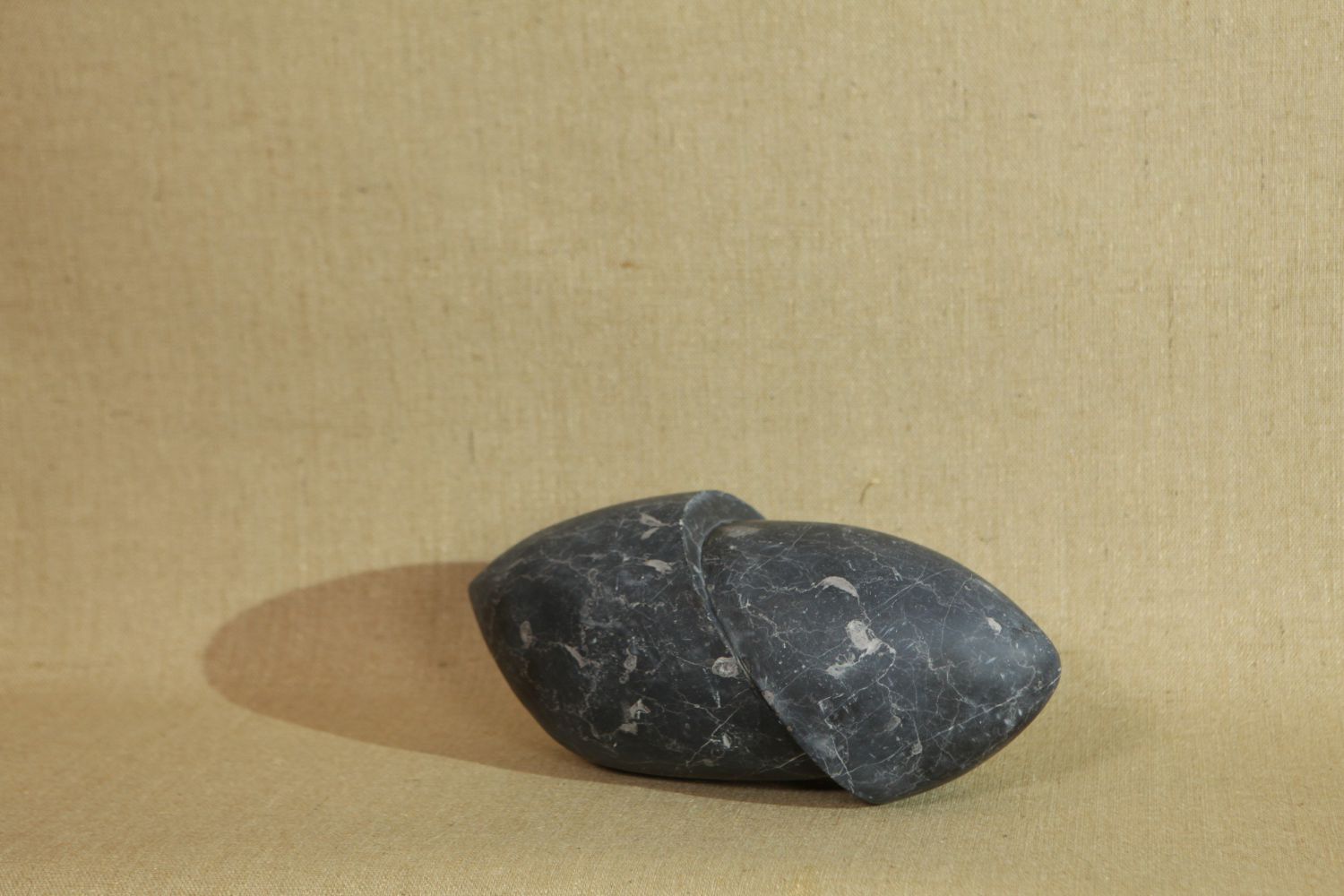
In the newly released book "House & People", the artist wrote: "Every artist belongs to a certain space of reality." “But then I realized I was wrong because life and art don't have to coincide.” Personality and soul can be very different from each other, like a person who wants to be among everyone but needs the warmth of one person, an angry nature still hopes for gentleness to appease. Poetry in art can be said to be the artist's dream.
Check out the names of the paintings he placed in the exhibition: "Red River", "One", "White Night", "Hide", "Seek", "Blackboard", "Shadows and shapes", "Dialogue", "Bridge prayer", "Peace"; or the names of the statues: "Grain of Rice", "Sound", "Non-dual", "Buddha is the mind"... also partly realize this dream. The dream of one is more than one, more than one is just one. More than beauty and sadness is peace under one roof. Is going to return. Is happiness. Even though he himself also realized: "Happiness is an abstract and distant concept... Happiness is a broad, long, flickering concept..."
Fortunately, art can also be classified as a form of happiness - for both the maker and the viewer. Because of it, at least abstract things can appear before the eyes, making the dream (even if it is a dream) not entirely too vague. It is a rearrangement, rebuilding, rebuilding, nurturing the soul.
Perhaps it is not wrong to say that Le Thiet Cuong planted "Destiny", slowly returning to himself, to the happiness closest to him. Art is valuable because it can turn even sadness into poetry and offer them to life, as he once wrote: "With art, a withered flower can bloom again, a dream can be dreamed again." , a smile, a cloud can still fly back."
Exhibition "Duyen" at Ho Chi Minh City Exhibition Hall, 92 Le Thanh Ton, District 1, Ho Chi Minh City, from August 3 - October 3, 2024.
The book "Duyen" with more than 200 pages of works and articles about artist Le Thiet Cuong was also released to the public on the occasion of the exhibition.




